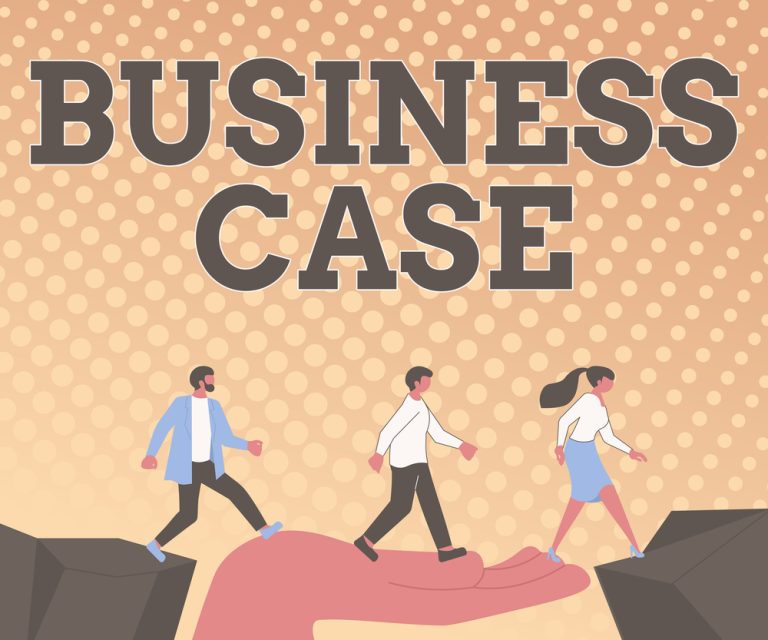
In today’s highly competitive retail industry, in-store marketing is a crucial aspect of driving sales and revenue. Companies have an annual budget in the tens of Millions allocated to these marketing programs as senior management teams recognize the necessity and the direct results they produce on sales and traffic. However, these programs are run in a highly inefficient manner with excel spreadsheets or several isolated systems and processes. In order to get buy-in from senior management or finance to invest in a platform that will help automate your planning, execution and reorders, you will need to create a business case for the enterprise in-store marketing platform and highlight the benefits along with the cost savings. We explore how a business case should be structured and which are the key areas to highlight benefits and cost savings.
1. Define the Opportunity
The first step in creating a business case is to define the problems you are attempting to solve. This could be anything from not being able to respond in a timely manner to store requests or inability to scale up to service your company’s growth or even the inefficiencies and high costs you’re incurring in executing campaigns without an in-store marketing platform. This will help you identify areas that you can quantify savings or increase sales. Cite examples, of recent issues that were costly or caused a miss in driving traffic and sales
2. Identify The Solution
Next, identify how the Enterprise In-store Marketing Software can help you address the opportunities you’ve defined. Are you looking to operate in a more efficient manner and cut costs? Do you need to mitigate single points of failure in your organization or process? Does the store associate’s experience with the visual marketing program need improvement? By clearly defining how the platform can make a strong business case for investing, you will justify the expense and investment for your operations.
3. Conduct a Cost-Benefit Analysis
Before making any investment, companies conduct a cost-benefit analysis to determine the potential return on investment (ROI) of an enterprise in-store marketing software. This involves weighing the costs of implementing and operating the software against the potential benefits, such as increased sales, reduced costs, and improved employee and customer experience. Following are areas you should be accounting for in your cost benefit analysis:
Mitigation of waste:
With sustainability initiatives being front and center for enterprises globally, the mitigation of manufacturing is not only a cost savings but also helps corporations reduce their carbon footprint. With ESG mandates globally and the commitments corporations make to their employees and shareholders, the enterprise in-store marketing platform plays a vital part in helping reduce waste. This is achieved by leveraging the in-store marketing software’s store profile database and ensures stores only receive the items that align with their profile.
Cost Savings on Manufacturing & Shipment:
An in-store marketing platform can help significantly reduce manufacturing and shipment costs by ensuring stores are allocated and receive visual elements that pertain to their locations. Additionally, shipments for kits can be reduced through planning and consolidating campaign shipments for locations when appropriate. The cost of errors that can be attributed to the lack of a platform should also be factored in to ensure you’re providing a holistic view on the unnecessary costs incurred by the business. These savings are highly quantifiable, and some corporations have saved up to 15% on their in-store marketing budgets.
Efficiencies for Stores:
The most important part of a brick-and-mortar retailer is the store and the entire retail operating model is structured around servicing the store to ensure they have what they need to drive sales. An enterprise in-store marketing platform will streamline the process for store associates allowing them to efficiently execute floor-set changes and reorders for items. This will provide the associates more time to focus on selling. Engage the leadership in the store operations department to discuss the concerns and challenges their teams are having with the marketing programs and determine how the platform will improve these downstream processes.
Scalability:
Growth is key to every business and the necessity to scale as an organization is growing is fundamental. Excel and bandaged home-grown or vendor supplied isolated systems that lack automation are inadequate to plan and execute enterprise in-store marketing campaigns. A platform that has implemented best practices at several large enterprises will allow you to scale easily. One approach to address scalability for the business case is to highlight how your team would need more resources to handle the marketing program as the business is growing. Alternatively, investment in an enterprise in-store marketing platform can help you operate with the same resources in a highly efficient manner.
Single Point of Failure:
Diversification is key to ensuring business continuity. The risks of having a single employee or supplier manage or run the program and be the only person with the knowledge on how the data is structured in an excel file or legacy tool will prevent management from having a good night’s sleep. Also legacy tools or tools developed and customized by vendors can be just as devastating when there will be no support for system failures. This exposes the business to a single point of failure in the situation the employee leaves or if a supplier enters into insolvency. Having a standardized platform used by several large enterprises will mitigate any risks and allow you to easily train or find resources with experience in running these programs.
Lack Of Integration:
Having non-integrated systems and processes becomes a highly inefficient way of running an operation as team members constantly need to re-key information across multiple systems with the possibility of introducing errors. An end-to-end platform for in-store marketing from planning to reorders would integrate corporate, stores and suppliers delivering efficiencies across your supply chain.
4. Identify How It Drives Incremental Sales
Although this is not essential to prove the business case, identifying how the platform can drive more sales can play a key role in your business case. For example if having an in-store marketing platform that will allow you to further version out your marketing to improve the targeting and making it more locally relevant or be more competitive, you can factor in the incremental sales the platform will help drive.
5. Showcase The Features and Benefits
In your business case, it’s essential to showcase the features and benefits of the enterprise in-store marketing software. This includes highlighting how the software can help not only your department but also merchandising, store operations and your suppliers. By showcasing the features and benefits of the platform to the other teams, involve them in your pitch to snr. management to demonstrate how compelling is the business case for investing in this software.
6. Address Potential Concerns
When making any investment, there are always potential concerns that need to be addressed. In the case of an in-store marketing software, these concerns may include the cost of implementation and operation, the potential disruption to existing processes, and the need for staff training. It’s essential to address these concerns in your business case and explain how they will be mitigated. At the same time interview existing enterprise customers of the platform and understanding their successes and failures during their implementation and roll-out processes will allow for a highly successful roll-out. This will comfort snr. management and demonstrate how successful the program will be for their teams.
7. Explain the Implementation Plan
Finally, it’s important to explain the implementation and roll-out plan. This should include a detailed timeline, budget, and staffing requirements. It’s also important to explain how the software will be integrated with existing systems and processes, and how staff will be trained to use it effectively. Ensure your roll-out plan for stores avoids peak business seasons and try to implement it prior so the stores can gain efficiencies. By providing a clear and comprehensive implementation plan, you can demonstrate that you have done your due-diligence and thought through all aspects of the investment and are prepared to execute it effectively.
Creating a business case for an in-store marketing platform requires a clear understanding of the challenges within your process. Getting buy-in from operations up or downstream will help build your business case and increase the ROI. It is essential to use an enterprise in-store marketing platform that has proven to work for several large enterprises that spend tens of millions on their in-store marketing campaigns.
For assistance on building a business case for an in-store marketing platform, please contact Rahim Kassam
To understand more about how CrossCap’s Enterprise In-Store Marketing Platform helps streamline your visual marketing process, request a demo.

